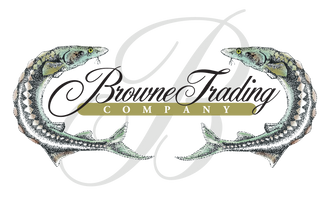
Sourcing Fresh Maine Seafood
The Portland Fish Exchange & Browne Trading Company
This post examines the purchasing required for fresh Maine seafood. When it comes to freshness and superior quality, it begins with the catch method, continues with the fishermen, and finishes with the fishmonger. Browne’s goal is to provide the freshest, highest quality seafood available, with emphasis on stunning local Maine seafood. One of the best sources of fresh Maine seafood is the Portland Fish Exchange aka our local fish auction. There are many reasons why the auction has been such a crucial element to Browne’s success over the years. The biggest is that it has allows Browne to inspect seafood before purchasing, ensuring high quality every time. Did you know that the Portland Fish Exchange was the first “display” fish auction in the United States?History of the Portland Fish Exchange

Browne Trading & the Portland Fish Exchange
Our daily access to the Portland Fish Exchange, coupled with our ability to ship “ocean fresh” overnight directly to our clientele, built the foundation and our initial notoriety to the industry. This immediate “sea to table” sourcing was groundbreaking in the early 1990s for chefs who were tired of receiving old and mishandled fish. Browne’s owner, Rod Browne Mitchell, championed how fish are treated from net to auction. Rod would frequently educate fishermen on how to transport fish to market in the best possible condition. His recommendation included gutting, bleeding, and icing the fish on deck immediately opposed to letting the fish sit in water. The fishermen that implemented these changes began to command higher prices on the auction in return for their care. Thrilled with the freshness, chefs began to clamor further for fish in a “pristine” physical state.
Traceable, Fresh Maine Seafood

How the Auction Works
Vessels land and offload their catches at the Portland Fish Exchange docks before the daily auction. The auction takes place Sunday through Thursday at 11 A.M.. Species are sorted by the Portland Fish Exchange staff, weighed into lots, tagged with the vessel's name, lot number, and date landed.

Portland Fish Exchange lots ready to be inspected. The lots are then placed into corresponding species stations on the floor of the Exchange. This is a temperature-controlled facility of 22,000 feet adjacent to the Portland Fish Pier. Here, buyers inspect the catches before convening in the auction room to place bids. A major advantage of the auction is the purchasing flexibility. Purchasers have no minimum or maximum quantity requirements. Products can range from a mere one pound of fish up to 1,200 pounds. Until recently, the auction was conducted by a live auctioneer. Now, it is handled electronically, allowing bidders to participate online if they so choose. Once the highest bid for a particular species is confirmed, the winner selects any lots from any boat they desire. They may purchase as many as 10 lots per bid. At the Portland Fish Exchange, sellers have the right to refuse bids on their catches and relist them again, giving them control over their harvest value. Auctions move fast and generally end within an hour. In the case of Browne Trading, our fish purchases are immediately transferred to our neighboring facility and shipped out the same day to awaiting customers.
PFE Commitment
The Portland Fish Exchange is a “non-profit, quasi-public corporation” managed by a Board of Directors. Browne’s Rod Mitchell is currently a sitting member of this Board. The Portland Fish Exchange prides itself on transferring up to date information on catch and pricing to empower buyers to make informed, competitive decisions. It also has deep commitments to Maine’s seafood sustainability within the Gulf of Maine.“The Portland Fish Exchange’s Mission is to foster growth and development of fisheries in an environment of transparency, fair-trade, and economic security,” says Bert Jongerden, General Manager of the PFE. “Further, our Board of Directors provides leadership at all levels of government to ensure the Portland Fish Exchange’s mission is continued to support Maine’s working waterfront and commercial fishing interests.”
